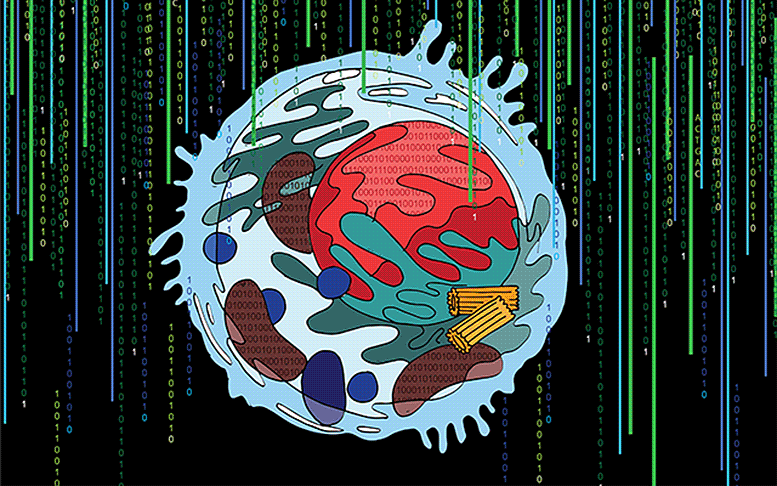
But to understand what parts of a cell can go wrong in a disease, scientists first need to have a complete list of parts.
By combining microscopy, biochemistry techniques and artificial intelligence, researchers at University of California San Diego School of Medicine and collaborators have taken what they think may turn out to be a significant leap forward in the understanding of human cells?The technique, known as Multi-Scale Integrated Cell (MuSIC), is described on November 24, 2021, in Nature.Left: Classic textbook cell diagrams imply all parts are clearly visible and defined.Right: A new cell map generated by MuSIC technic reveals many novel components.
Gold nodes represent known cell components, purple nodes represent new components.
In the pilot study, MuSIC revealed approximately 70 components contained within a human kidney cell line, half of which had never been seen before.In one example, the researchers spotted a group of proteins forming an unfamiliar structure.
Working with UC San Diego colleague Gene Yeo, PhD, they eventually determined the structure to be a new complex of proteins that binds RNA.
The complex is likely involved in splicing, an important cellular event that enables the translation of genes to proteins, and helps determine which genes are activated at which times.
The insides of cells — and the many proteins found there — are typically studied using one of two techniques: microscope imaging or biophysical association.With imaging, researchers add florescent tags of various colors to proteins of interest and track their movements and associations across the microscope’s field of view.
What’s different about MuSIC is the use of deep learning to map the cell directly from cellular microscopy images?
Smaller elements, such as individual proteins and protein complexes, can’t be seen through a microscope.
The team trained the MuSIC artificial intelligence platform to look at all the data and construct a model of the cell.They’ve only looked at 661 proteins and one cell type.
Disclosures: Trey Ideker is co-founder of, on the Scientific Advisory Board and has an equity interest in Data4Cure, Inc.Ideker is also on the Scientific Advisory Board, has an equity interest in and receives sponsored research funding from Ideaya BioSciences, IncJ
Gene Yeo is a co-founder, member of the Board of Directors, on the Scientific Advisory Board, an equity holder and a paid consultant for Locanabio and Eclipse BioInnovations.
Emma Lundberg is on the Scientific Advisory Boards of and has equity interests in Cartography Biosciences, Nautilus Biotechnology and Interline Therapeutics.
Wade Harper is a co-founder of, on the Scientific Advisory Board and has an equity interest in Caraway Therapeutics.
